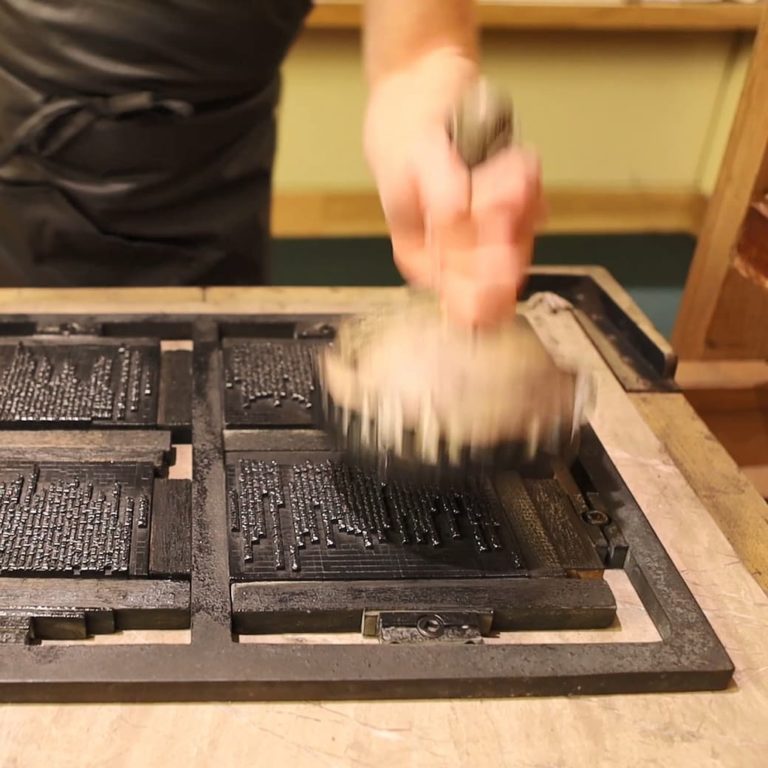
‘to wear the dressing of his lines!’
Linen rags were pulped, and their fibres re-used in paper. This was made by hand, one sheet at a time.
English paper mills did not make paper good enough for printing, so it was imported from France.
Source material
Most paper today is made from wood fibres, but in the 1620s, paper was recycled, made from the fibres of linen rags. These were sorted, washed in a calcium carbonate solution, then left to ferment in stone troughs for several days. Then they were rinsed and pulverised, mashing the fibres into a pulp. The whole process needed continuous water. Non-stop pulverising was possible at a customised paper mill, where hammers were powered by a water-wheel.
The paper maker inserted a mesh of fine wire, called a ‘mould’, into a large vat containing the pulp. As the mould was pulled up, it collected a thick layer of tangled fibres. The layer was placed flat between blankets of woven wool called ‘felts’, and pressed to squeeze out the water. After further drying, sheets were dipped in a gelatine solution: this technique, called ‘sizing’, made the paper’s surface better for printing.
At that time, there were no paper mills in England producing paper good enough for printing, so it was imported from northern France. The cost of the paper used in the Folio was as expensive as the work of setting the type and printing.
Unlike the runny ink used for writing in hand, printing ink had to be thick and oily. It was made by heating a mixture of linseed oil and pine-tree resin, and adding soot to darken it. It was pungent!




